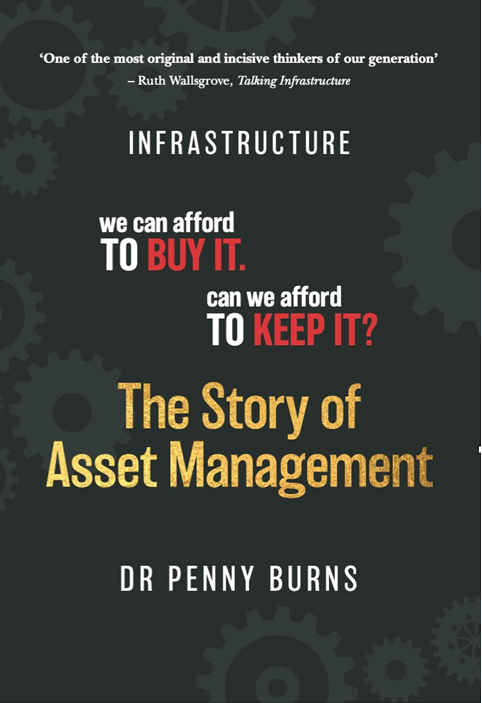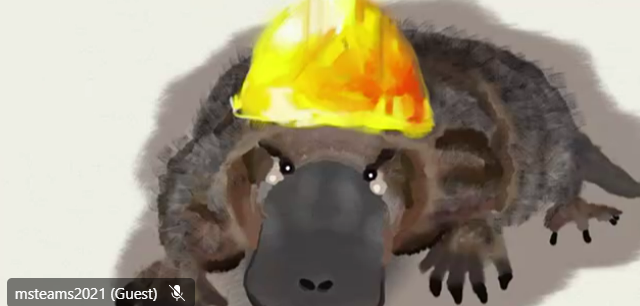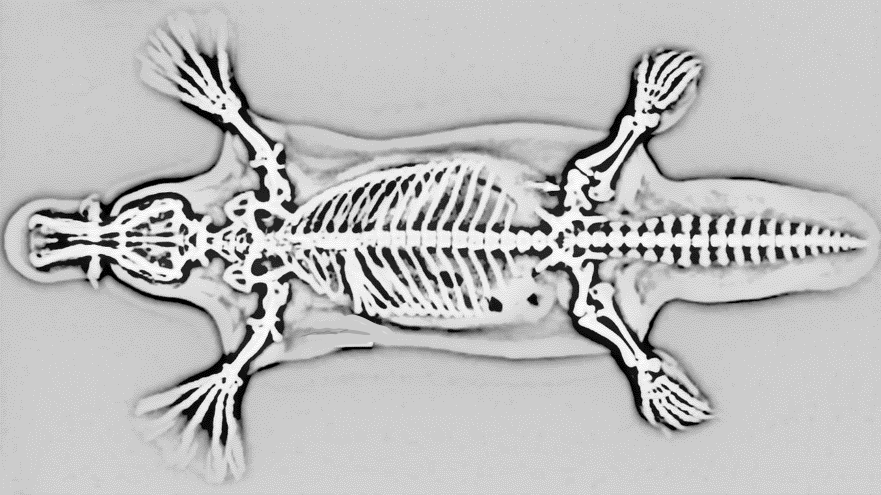
Last known photo of St Francis Dam before it collapsed, © scvhistory.com
You know when you hear something you never noticed before, and then hear about it again the very next day? (It’s known as the Mandela Effect.)
I mean, I saw Chinatown many years ago and so understood that there was a rotten heart to Los Angeles’ water supply, but I never thought about where the water comes from – or understood how it trashed a valley and its communities in the 1920s.
Originally called Payahǖǖnadǖ, meaning ‘place of flowing water’, Owens Valley is a now dry valley north of LA.
I work with enough hydro dams to be curious about dam failures – there have been a few catastrophic failures in the 20th century – so wanted to watch a PBS documentary about the total failure of St Francis Dam in the valley. It failed because of hubris. It did not make it past its first day in operation. But the documentary was about much more than the immediate collapse and the hundreds of people who died that day.
Los Angeles basically stole the water, buying up water rights surreptitiously and sometimes illegally. For some reason I can’t comprehend, it even memorialises the engineer responsible for the dam failure (and the overall aqueduct, which does still exist): Mulholland, of the Drive.
And the day after I watched the documentary, I read a review of a book titled Dust, by Jay Owens, using the Owens Valley as a 20th century example of humanity creating arid dust bowls where there were once thriving ecologies.
Metropolitan LA is a funny old place. I have spent plenty of time there as my brother moved to Azusa in the late 1970s, and retired to Orange County to the south. It was hailed as the city of the future once, but water is the big question mark, still. You would have to conclude that the LA basin is well beyond its carrying capacity, and perhaps always was.
Owens Valley, and St Francis Dam, seem suitable reminders of the challenge of sustainability. enshrined in the original BSI PAS 55 definition of Asset Management. The valley and its people – original and immigrant – paid the price for the development of a vast city region.
Not the first and surely not the last example, but a sobering reminder that water engineering is both hard, and not always on the side of the angels.

Thanks to Chad Dulac of Chelan County PUD, WA, for this steam-punk platypus
I just dutifully waded through a dismal history of the last five decades of British economic policy. Plenty of government mistakes, and nothing that really got past missing an empire. (The Tyranny of Nostalgia, by Russell Jones.)
Despite a less than adequate grasp myself of the mechanics of money supply and exchange rates, I wanted to learn lessons for we should be doing in future. And try to keep up more with Penny Burns, of course.
The book itself focused most on economic stability, and how that encourages good things to happen. Or at least doesn’t scare the horses. And something beyond short-termism and political self-interest.
But, at the very end, the author did have to conclude that successive British governments have done less and less on what truly underlies the ‘economy’: on developing skills, encouraging new ideas, and supporting infrastructure. On how to enable people to do interesting things, really.
And here is where talking about infrastructure comes in.
The physical infrastructure of water and waste water, power, transport and telecommunications isn’t something in its own right, assets for their own sake. It’s about enabling us to do what we need and want to do. Along with agriculture, education and health, it has to start with supporting Maslow’s hierarchy of needs. No-one too hungry or cold or isolated or poorly educated to reach for self-realisation.
In a country increasingly of “private wealth and public squalor” – used originally to refer to the United States – I come back to the sheer waste of potential in Britain, along with the heartache of poverty and lack of opportunities. It’s not like we don’t have plenty of really interesting challenges to apply our collective energy to.
Obviously no-one in the current British government has any kind of vision for community beyond their rich mates.
But what is our vision?

It may be hard now to imagine a time when we didn’t have asset management so let’s go back almost 40 years ago to when it started, a time when our spending on assets was hand written on file cards, before AIS existed, before fax machines (remember them?), and before computers were everywhere. How did we go from practically nothing to where we are today? Well, it has taken 40 years. This is the story of the first ten: how it all started – and why.
Here we go behind-the-scenes to see how the idea arose and grew and how it was influenced by the economic, political and administrative changes taking place at the time in the Australian government and, indeed, around the world. We look at the challenges, successes and setbacks – and many of the funny things that happened along the way. So join this journey into the past and gain a deeper understanding of the foundation on which contemporary asset management principles are built.
Available both in print and ebook versions from Amazon (kindle) and other on line booksellers (epub). All proceeds support the work of Talking Infrastructure.
Also see The Asset Management Story Page for more

Not Neom – more AI!
Asset Management just took an interesting right turn. Neom, the city of the future planned to cost $550 billion, is currently hoovering up Asset Managers.
Some people I hugely respect, including Mark Sexton and AMCL, Rhys Davies (previous chair of the technical committee for ISO 55000) and Stacey Jones, ex-BHP, have committed to time in Saudi Arabia to ensure AM is properly incorporated as Neom’s design and construction develops.
At one level, this is progress: that a mega mega mega project takes whole-life Asset Management very seriously from the start.
Ever since I interviewed some Asset Managers from Enron twenty years ago – not long before Enron ate itself – I have understood that AM can only be as progressive as the objectives it is aligned to. We are not automatically on the side of the angels.
When we talk about ‘future friendly assets’, the starting point is that someone has thought through how much a shiny new asset will take to operate and maintain in practice. But it must mean more than this: what will the impact of the asset be, starting with whatever materials it uses, and extending into the impact on ecology and long-term pollution, including CO2.
When, if ever, is it a better idea to build new than to maintain the infrastructure we already have? Can we build our way out of trouble?
A fascinating time to look at the different directions we might take from here. Neom as opposed, for instance, to the commitment to biodiversity in infrastructure at the Blue Mountains City Council.
For the moment, Neom is an Asset Management magnet, with consequences probably far beyond the Middle East.
It’s worth looking Neom up on YouTube, if you have not already.
Dr Monique Beedles ran a fascinating webinar for the Institute of Asset Management on September 6 on why we should not talk about people as things you can put on a balance sheet.

As she put it, we of all people should recognise that people and assets are not interchangeable. People are ends, not means, with value independent of our economic utility.
Her intention is to rehumanise the discussion about people and work. A ‘people first’ strategy.
But this fits with her view on what’s really needed for good Asset Management, too: her hierarchy of what’s required starts at the bottom with Tech Smarts, through Biz Smarts, to what she calls Street Smarts at the top*. Or the qualities we need to bring to the table of humility, empathy and integrity.
I was particularly taken with her terms we should cut from our vocabulary: productivity, human resources, human capital.
I love the idea that those of us who manage things are in a particularly good position to spell out that people are not things. That people first is, of course, the right approach to physical infrastructure.
And though she didn’t capitalise it as a slogan:
Build Community, not Capital!
www.moniquebeedles.com for her AMP Peak paper, ‘Leadership in Asset Management: Why Your People are Not Your Greatest Assets’
*See her book Leadership Assets, A Whole-of-Life Plan for your Asset Management Career (2021)

In February, I posted a request for input on what skills, experiences, aptitude we need to be an effective Asset Management practitioner.
I have been looking at this for a review of the IAM Competences Framework that’s about to kick off in earnest next week. But I’ve been thinking about it since I did a spreadsheet for the previous IAM professional development chair, of everything a well-rounded AM practitioner needs to know about – and therefore, maybe, what to teach them on an advanced qualification course such as the IAM Diploma..
But, this being Asset Management, this is made more complicated by ambiguities.
Who is an Asset Manager: someone in a team called Asset Management, or everybody involved with managing physical assets? What about an Asset Management consultant? What is more like general knowledge that we should be aware of, maybe speak the language (of finance, say) without actually necessarily being able to do it?
‘Everyone involved’ covers a huge range of competencies, including all the technical disciplines and specific lifecycle skills such as design, project management, maintenance. An AM consultant may need to be a specialist in something specific rather than a generalist in order to be saleable. Knowing enough about finance may be about knowing what wikis to look up for terminology.
So I have tended to go with the question of the core capabilities of a dedicated AM team inside an asset owning organisation – and increasingly, what they need to know that they wouldn’t get coming through the ranks of maintenance, or in an engineering degree.
There is understanding about the business of the organisation. There are soft, people skills such as communication and facilitation. Some of this can be taught on training courses.
But two interlinked areas that currently trouble me are risk and information.
I have sort of realised these are a problem for a while: how many of us have no real sense of information, and I don’t mean IT here; and what (high) proportion of us didn’t like statistics and probability in our degrees.
People are far, far more likely to ask questions of potential hires about their engineering backgrounds – or even test their Excel skills – than their usable skills with risk and information analysis.
And yet I recently had reason to think that most of us are not up to speed with the 17th century on using risk. With the 17th century gambler-mathematicians who laid all the groundwork for risk-based decision-making, for decisions where we don’t know exactly what is going to happen because it’s in the future, which is basically all decisions.
And that the AM people I know who really use information well come are ex-military intelligence, or teach data science, or have highly educated librarian backgrounds. In other words, really high-grade information skills. Many of the rest of us seem to be floundering.
Asset management capabilities are not only not primarily engineering – what if there are major disciplines which we need, but fail even to reach for serious education on?
What does perfect Asset Management look like? What’s at the top of the mountain we’re climbing?
And what’s a metaphor between friends?

But to some of us it’s more a windy, winding road, over yet more hills, where we sometimes see part of the road up ahead, but never glimpse the end.
Why does this matter? Having recently faced a virtual room full of people saying they would know what to do next, if only someone could describe the end state for them: as though Asset Management is an accomplishment, something you can complete. Done, checklist all checked, and move on?
In contrast, is there a destination for, say, engineering? Although many engineers may not examine what they believe, they surely think of engineering more as a state of mind, a way of thinking, rather than something that gets finished. (And who even has a vision of HR?)
We could describe the top of our mountain as the point where everyone takes it for granted that we think longer term, whole system and lifecycle, use information wisely, and truly embrace uncertainty.
But I don’t think that’s what the metaphor betrays. I think it’s more ‘when we have a complete asset inventory and a strategy for every class’ and can stop thinking about them and move onto something more fun. The way some, at least, appear to think a check the box approach to ISO 55000 is what we need, or even the point.
But, you know, it’s also whether fun to us means continual discovery, the thrill of not knowing and then learning – or getting back to my desk to fill something in.
Roll on, rolling road!
Or, making sure we always ask who truly benefits by a new infrastructure project.

Infrastructure investment always attracts several groups with particular interest in the projects themselves.
There are the construction companies where it is all upside (work for them) and no cost, at least to them. They probably won’t even be around when the assets are in use.
There are internal project engineers who want cool things to build, whose interest in the assets once constructed can be minimal. That is to say, they don’t necessarily worry about handover of as-builts or how well the assets work after ten years. Their job is to do shiny news things!
And of course there are developers, whose interest extends to how much they can exploit the infrastructure – and with a long, long history of lobbying to the point of corruption.
I am not sure if the people who fund it always think about this. Assuming, of course, they have not already been captured by the lobbying and mindsets of construction companies and developers.
A lot of people like to see money invested in their neighbourhoods, at least until the construction noises start.
So, wearily, we have to take this on as infrastructure Asset Managers and stewards.
Like mad-eyed prophets calling out in the wilderness, and not necessarily honoured in our own country, nobody maybe wants to hear: Cui Bono?
My boss has been heard to say that when they started the company in 1997, he assumed that within a few years we would have figured everything all out and would just be applying the Asset Management manual. Instead, we learn something new on every project… Twenty five years on, that’s certainly true for me.

My old colleague John Lavan described what we have to do as tackling problems, not solving puzzles.
A puzzle is (in his terms) something where you already know what you have to do to solve it. It’s a rule-based game, like school-level mathematics. Apply this methodology and it will come out right.
Whereas we are faced with problems, where we don’t necessarily know what to do, or if there is a good solution.
As soon as we work out a useful approach on something, we’re faced with having to evolve it further. That is, even if we’re lucky enough to have a good way to start.
Fellow Talking Infrastructure Board member Lou takes this further. There are puzzles, which don’t resemble Asset Management, but perhaps some engineers still wish for; problems, which seems to be our AM world; and predicaments, where there maybe isn’t a solution at all.
I’d like to think building an asset inventory is a puzzle that we already know how to solve. Plenty of individuals don’t yet know, of course, but that feels like just an issue of communication.
On the other hand, what’s an effective strategy for Asset Management in a particular organization? We know the principles (alignment to corporate targets, the Six Box Model of elements), but that’s merely the opening tool kit. Making Asset Management business as usual is a problem, still, for just about everyone. Too many variables and different nuances.
Old age is a predicament. And as for climate change? Maybe, given human psychology, it’s a predicament, not simply a problem.

“What’s the first step to a good Strategic Asset Management Plan (SAMP)? A bad SAMP…”
My ex-colleague Ark Wingrove’s saying has resonated with clients since he first coined it. You do not have to wait for perfection; the important thing is to start, knowing you can improve as you go.
It works not just because it’s true. Just having someone tell you you won’t get everything in Asset Management perfect first time liberates us to try. Otherwise – and this surely tells us something about the asset culture we pick up, and need to change – we get frozen in the headlights of needing to be right.
It’s a profound truth of AM that you will never know enough about the future; and yet you still have to have a strategy, you still have to plan, you still have to make decisions that matter. And so inevitably we will get some important things wrong.
The approach that the AM documents and processes we produce are all iterative is, of course, built into the diagrams, the 6 Box Model and the flow of ISO 55000, continuous improvement and the ’learning loop’ of Plan-Do-Check-Adapt. The idea that, above all, we can’t leap straight from muddle to highly sophisticated Asset Management Planning has long been recognised in Australasia. We have to build, step by step, our planning evolving with our increasing understanding.
But it just struck me that it’s not simply how we improve things as we know more. The real blocks are thinking we know more than we do at the start, and the fear that we will be exposed for not knowing enough – the toxic aspects of being an expert.
Years ago Penny Burns came in to take my Sydney team through scenario planning. The real achievement of this was to move everyone away from their confidence. From believing they could ever be certain about the future.
In an exercise around understanding our levels of uncertainty in risk training this week, someone asked – tongue in cheek – how we could ‘win’.*
The urge to be right is natural, I guess, but it also goes with all sorts of baggage. That we won’t even start unless we can be certain. That it is better not to try than to run the risk of being wrong.
As though, for example, a strategy for Asset Management is a test we have to pass.
The principle of evolving, getting better as we go but never reaching 100% certainty. What examples of positively ‘embracing uncertainty’ have you seen in practice?
*Calibration training based partly on the work of Douglas Hubbard, see his The Failure of Risk Management. If you have never come across this, aiming to show off that you’re right that will ensure you don’t get it right. (And even telling people this doesn’t help them, at least the first time around.)

Recent Comments